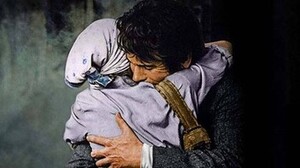Reds

Filmmaker Warren Beatty was born into an intellectual household in Richmond, Virginia, where his mother, a teacher, and his father, a public administrator, instilled in him a deep sense of curiosity and ambition. Though he initially pursued engineering, his passion for the arts soon took precedence. In the early 1950s, Beatty moved to New York City, where he quickly attracted the attention of theater and film producers. His breakthrough role in Splendor in the Grass (1961) marked the beginning of his Hollywood career, revealing the youthful vulnerability and quiet intensity that would become a defining feature of his screen presence.
By the mid-1960s, Beatty had secured his place as one of Hollywood’s most sought-after leading men, amplifying his influence with Bonnie and Clyde (1967), a seminal work that redefined the contours of American cinema. Serving as both its producer and star, Beatty leveraged the film’s success to assert greater creative control over his projects, evolving into a filmmaker unafraid to challenge conventions. This artistic autonomy culminated in Reds (1981), a historical epic that explores the emotional and ideological dimensions of revolution. The film reflects Beatty’s own maturation as an artist – its vision as sweeping as it is personal.
Reds is Beatty’s magnum opus, a stirring portrayal of the Russian Revolution of 1917 that reverberates with the same ambition, fervor, and disenchantment that defined the creative era he had helped to shape. If Bonnie and Clyde heralded the arrival of a political and aesthetic rebellion, Reds marks a reckoning with the cost of its aftermath. Beatty’s journey parallels that of his subject, John Reed, whose growing disillusionment with the revolution mirrors the filmmaker’s own interrogation of idealism and artistic legacy. Through Reed, Beatty constructs an intimate portrait of a man consumed by belief, even as that belief begins to unravel.
The film opens in early 20th-century New York, where Reed (Beatty), a fervent young writer, meets Louise Bryant (Diane Keaton), an ambitious fellow journalist. Their initial attraction is rooted in their shared socialist ideals, and their bond deepens through their acquaintance with and discussions among a vibrant local community of political thinkers and avant-garde artists. The film’s first act captures the intellectual energy and romantic urgency that drove Reed and Bryant’s early relationship, animated by impassioned debate and the shared dream of societal transformation. Reed’s unwavering idealism emerges as the axis around which both his politics and his identity revolve.
As the story progresses, Reed’s commitment to the socialist cause strains his relationship with Bryant, turning their love and mutual respect into casualties of his revolutionary fervor. The early scenes of intimacy between Reed and Bryant are rendered with tenderness, underscoring the emotional stakes before the political storm fully breaks. Beatty builds this tension deliberately, between love and politics, personal sacrifice and ambition, guiding the narrative to its turning point: Reed’s decision to leave for Russia. With that departure, the film’s scale and tone shift dramatically – it is here that the vision transitions from the romantic and dissolves into the epic.
The storming of the Winter Palace – the film’s most visually commanding and dynamic set piece – does not simply depict the detached spectacle of the October coup but plunges the viewer into the immersive chaos. Beatty’s direction pulls the audience into the upheaval, using handheld camerawork and sharp edits to follow Reed through the charged streets of Petrograd. As the frenzy of revolution erupts, Reed becomes both witness and participant, swept into a movement whose ideals increasingly betray their original promise. The grandeur of history begins to erode the emotional clarity that had once grounded him.
Upon returning to the United States and then reentering Russia, Reed confronts a radically changed political reality. His once-pure vision of revolution is shattered as he finds himself alienated from the very cause he once championed. The film captures this unraveling with restraint, allowing the weight of Reed’s disillusionment to build as he realizes the movement he had hoped would create a utopian society has devolved into violence and repression, with Soviet authoritarianism replacing the ideals of liberation. Reed’s death becomes emblematic – not just the fall of a man, but the collapse of a belief system that could not survive the machinery of power.
Reds is a searing meditation on the cost of idealism. It examines the emotional and political consequences of revolution, revealing how the pursuit of grand visions can destroy those devoted to them. At the true heart and core of the story lies the tension between love and ideology, as Reed’s loyalty to the cause estranges him from Bryant and ultimately from himself, highlighting the human toll exacted by uncompromising conviction. The film resists any romanticizing of revolution, choosing instead to confront its hard truths – how the most noble aspirations can become instruments of ruin, and how clarity is often born through collapse.
The production of Reds reflects Beatty’s unyielding commitment to scale and authenticity. The film’s expansive vision demanded the meticulous recreation of early 20th-century Russia, from detailed sets and period costumes to vast crowd scenes. These technical challenges were heightened by Beatty’s insistence on integrating the personal and the political, threading the historical narrative with the emotional currents of Reed and Bryant’s relationship. The result is a work that seamlessly marries intimacy with spectacle, as Beatty worked to ensure that the film’s epic sweep never overshadowed the passionate love story, grounded in the vulnerability of human connection, at its heart.
Though Reds earned three Academy Awards, it struggled commercially, serving as both the artistic apex of Beatty’s career and a poignant elegy for an era of cinematic boldness. It marked the end of a time when Hollywood briefly allowed epic ambition and personal vision to coexist on screen. In the decades since, Reds has been recognized as a towering achievement – an emotionally resonant, visually majestic meditation on sacrifice, conviction, and the fragile threshold between history and myth. It endures as proof of cinema’s rare ability to capture the grandeur of revolutions and the quiet, private heartbreaks that shape them.

